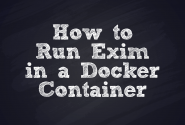
Email Migrations: Everyone Loves Progress, But Nobody Likes Change
With more than two decades of email migration experience here at atmail, we have learned that even during the smoothest and most well orchestrated migrations, “You can please some of the people all of the time, you can please all of the people some of the time, but you can’t please all of the people all of the time”, quoting Lydgate and Lincoln.
This is because whilst everyone likes progress, nobody likes change.
Email migrations are a change for the end users, and for that reason alone, no matter how positive the change is and how many users welcome the change, there will always be some end users who will feel bewildered and disoriented. Maybe the new email filtering is so much better than the old one that they will think that some of their email is lost because they don’t see the usual amount of daily spam in their inbox. Or maybe they are so accustomed to their old, cranky webmail that their new, improved, breath-of-fresh-air interface actually confuses their productivity for a day or two. Not because it is bad – just because it is new – and because we are all different, we all take different amounts of time to adapt to anything that is new.

3 Principles to a Successful Email Migration
1. Avoid a disruption to your email service
Mailboxes have become huge. Several gigabytes of available quota changed the way that customers use email: it has now become an accidental archive and very few people actually delete their messages, which means that many customers have big mailboxes full of tens of thousands of messages. The old, big bang, “migration night” approach doesn’t fit anymore, because the downtime required for today’s email migrations would be unacceptable to both customers and organisations alike.
At atmail, we use a “live” migration methodology, also known as a “proxy migration”. This allows only specified accounts to be migrated at any time, and allows a gradual introduction of the platform to users. This also means that both old and new platforms are fully available for the entirety of the email migration, allowing a natural service level or account level rollback to the source platform (if required). The beauty of this type of migration is that it is incremental and it results in a near zero downtime migration.
We start by establishing our services at the frontend of the whole email operation, and this is the only time where a maintenance window is required, and only for a few minutes.
At this point, all of your customers are still serviced by the legacy platform, and we only act as a proxy. We then proceed to migrate the data on a per user basis, switching them onto the new service on the fly, with only a few tens of seconds of transparent service interruption. This will immediately enable your customers to use the most secure and up to date protocols. Data transfer is also through secure protocols. Security first!
Our migration engine allows you to choose which customers to migrate and when. For example, the schedule can be based on: eager early adopters who opted in for an early migration; the most efficient way to dispose of legacy resources; or any other filter or metric that is important to you. We can scale the migration horizontally, and the only limit is the legacy platform throughput. You are in control of the pace of the email migration. We can migrate from your legacy solution (whether it is in the cloud or on your premises) to either our cloud services or to our product installed on your premises.
A migration, though, is only as good as how well it migrates the actual data. To us, every migration is a customer happiness project with the goal of full customer satisfaction. We migrate not only email data, but also contacts, calendars, files and settings – adapting them to our product when needed.
We use standard refined methodologies and tools, but every single time we tailor it to the reality of the legacy system and the customer requirements. Migration dry runs, functional tests and complete UATs are an integral part of it. Our professional services team will handle your migration adhering to your policies and requirements.
2. Anticipate that some end users will call customer support
Whether they need to or not, some end users will call customer support. They might call to ask where their usual spam is, or because they are so familiar with their old UI that they don’t understand the new one at first sight and want someone to talk it through with them in person.
This is something that we can anticipate and help you mitigate, thanks to our email migration methodology and our past experience in running large, consumer-facing, email migrations. By flattening the curve of adoption with an incremental migration approach, it is possible to maintain the migration impact within the capacity of your customer support, and thus ensure your customers feel well-served by your support team. Proactive end user communication is also key.
3. View migration as a team journey
Each migration is a unique, tailor-made experience, which involves many stakeholders on both sides. Product owners, marketing, operations, customer support, professional services, and possibly service integrators – should all share their goals and expertise to work together with a common, aligned goal: the end user experience. Each stakeholder has value to add and should have a say at every step – until the very last user is migrated, the last issue resolved, and the legacy platform can be safely decommissioned.
Summary
To increase your chances of a successful migration, you’d be wise to factor these principles into your planning and communications from the very beginning. That said, even with the most meticulous planning (with stakeholders on both sides) and a gradual proxy migration (to avoid a disruption to your service), it’s important to recognise from the outset that you will have end users call customer support – because everyone loves progress, but nobody likes change.
Free Email Migration Guide
If you’re interested in learning more about successful email migrations, we invite you to download our comprehensive 28-page guide:
7 Steps to a Successful Email Migration: A guide to help managers sleep at night.

About atmail
atmail is an email solutions company with more than 20 years of global, white label, email expertise. You can trust us to meticulously migrate your email platform with no loss of data. We power more than 170 million mailboxes worldwide and offer modern, white-labelled, cloud hosted email with your choice of US or (GDPR compliant) EU data centres. We also offer on-premises webmail and/or mail server options. Contact us anytime, here.

